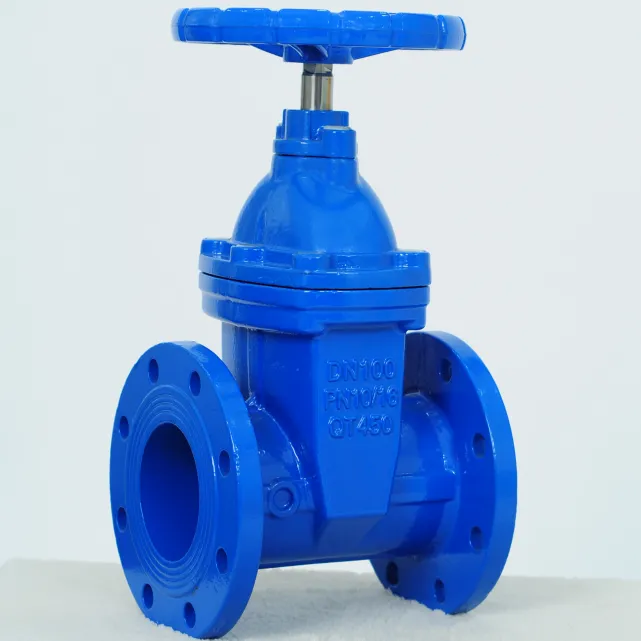td trap valve
Understanding TD Trap Valves Function, Design, and Applications
Introduction
The TD trap valve, also known as the thermal dynamic trap valve, plays a crucial role in fluid control systems, particularly in industries that rely on steam, water, and other liquid mediums. As an essential component in the management of condensate and steam, the TD trap valve ensures operational efficiency in various processes, ranging from power generation to food processing. This article delves into the function, design, and applications of the TD trap valve, highlighting its significance in modern engineering systems.
Function of TD Trap Valves
The primary function of a TD trap valve is to automatically discharge condensate while preventing the escape of live steam from the system. When steam travels through pipes, it condenses into water as it cools. This condensate must be removed efficiently to maintain the system's performance and prevent damage. The TD trap valve operates on the principle of differential pressure and temperature, utilizing the heat of the steam to open its valve mechanism, allowing condensate to flow out while keeping the steam confined within the system.
One of the key benefits of the TD trap valve is its ability to operate without requiring any external power source. The valve is designed to respond to changes in temperature and pressure autonomously, making it ideal for applications where reliability and efficiency are paramount. Additionally, the automatic discharge of condensate helps to prevent water hammer and thermal shock, which can lead to severe pipe damage and reduced equipment lifespan.
Design Features
The design of a TD trap valve plays a significant role in its functionality and reliability. Typically, these valves include a body, a valve seat, a valve disc, and a mechanism that responds to thermal dynamics. The valve operates on the principle that steam and water have different densities and thermal properties.
When steam enters the trap valve, it heats the internal components, allowing the valve to remain closed. As the steam condenses into water, the density increases, causing the internal temperature to drop. This differential triggers the valve to open, allowing the condensate to escape while preventing steam from leaking.
Moreover, TD trap valves are available in various materials, including cast iron, stainless steel, and bronze, to withstand different operating conditions and fluid types. Their design is often compact, facilitating easy integration into piping systems without requiring significant modifications.
td trap valve

Applications of TD Trap Valves
TD trap valves are utilized in a wide array of industries due to their dependable performance and functionality. Here are some notable applications
1. Power Generation In power plants, TD trap valves play a crucial role in steam systems, helping to maintain optimal conditions for turbine operation. By efficiently managing condensate removal, these valves ensure that turbines operate at peak efficiency, thus maximizing energy output.
2. Food Processing The food industry often employs TD trap valves in steam heating systems. These valves assist in maintaining the temperature and quality of steam used in processes such as sterilization and cooking, ensuring products meet safety and quality standards.
3. Chemical Processing In the chemical sector, maintaining precise temperature control is vital. TD trap valves help manage steam and condensate in reactors and distillation units, ensuring chemical processes run smoothly and efficiently.
4. HVAC Systems In heating, ventilation, and air conditioning (HVAC) systems, TD trap valves contribute to the efficient management of steam for heating. They help keep heating systems free of excess water, improving the overall efficiency of heating units.
5. Pulp and Paper Industry In pulp and paper manufacturing, steam is essential for cooking and drying processes. TD trap valves ensure that condensate is removed without compromising steam quality, thereby enhancing the efficiency of production processes.
Conclusion
The TD trap valve is an indispensable component in various industrial applications, offering reliable performance in managing steam and condensate. Its design, which operates on the principles of thermal dynamics and pressure differentials, ensures that it functions autonomously without the need for external power. As industries continue to evolve, the importance of efficient fluid control systems remains paramount, and the TD trap valve will undoubtedly play a significant role in achieving operational excellence across sectors. Its versatility, reliability, and effectiveness make it an ideal choice for modern engineering applications, ensuring that systems function smoothly and efficiently while reducing the risk of equipment damage and downtime.
-
The Key to Fluid Control: Exploring the Advantages of Ball Valves in Industrial SystemsNewsJul.09,2025
-
The Versatile World of 1, 2, and 3 Piece Ball ValvesNewsJul.09,2025
-
Stainless Steel Ball Valves: The Ideal Choice for Efficient Flow ControlNewsJul.09,2025
-
Optimizing Fluid Control with Ball Float ValvesNewsJul.09,2025
-
Manual Gate Valves: Essential for Control and EfficiencyNewsJul.09,2025
-
Everything You Need to Know About Butterfly ValvesNewsJul.09,2025
-
The Versatility of Wafer Type Butterfly ValvesNewsJul.08,2025




